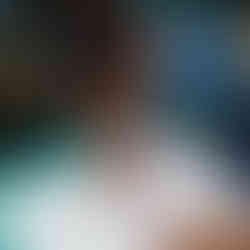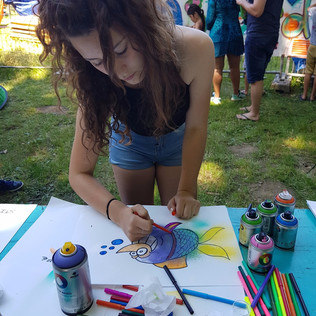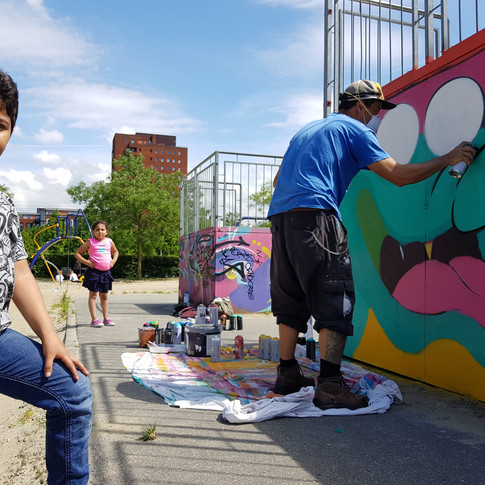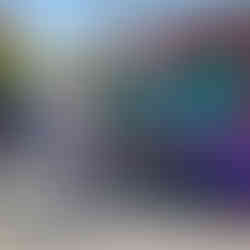Interview with Ricardo Moste (MEX)
- Cika Schulz
- Jul 11, 2017
- 10 min read
Last week the Street Art Museum Amsterdam was illuminated by the visit of the Mexican graffitero, artist and illustrator - Ricardo Moste. MOSTE is spending 20 days residency in Amsterdam, in between international festivals such as Mextonia (Tallin, Estonia)
On Wednesday he painted in Slotermeer's Gebrandy Park. The sides of the skate park halfpipe are now covered with on one side a colourful and amusing crocodile and on the other a cartoonish though slightly scary-looking wolf. Last Thursday we took a day off from the office to show the city and celebrate the good in life. We saw modern sculptures in Art Zuid and youngsters performing somersaults on inline skates at Museumplein. During lunch I sat down with Ricardo for a small interview. He talks about what inspires him and how he likes to inspire kids in return. About how he believes you can learn to master art techniques through time and about his experiences in Amsterdam. Don’t hesitate to read all this yourself below!

Let’s start the interview with an introduction of yourself. Who are you? Would you call yourself a street artist or graffiti artist or do you do something else next to this? Do you work on both legal and illegal basis?
So, my name is Ricardo Mosterin. My artist name is Moste, a shortcut of my last name. I’ve been called so by my friends since I was very very young. I studied graphic design in a University in Mexico and I had the opportunity to make one year of internship in the university of Sao Paolo, Brazil. There I specialised in illustration. I have had a particular attraction to drawing since I was very young. But it was until I had to decide which career I was going to follow, that I started to do it formally, to make a living.
Well, about the graffiti and street art. When I was just finishing elementary school, I started to see a lot of graffiti in my city. It was like a complete boom of graffiti in Mexico in the middle of nineties. It was just crazy because it didn’t matter if you draw or you don’t, or you like art or you don’t. Everyone was doing graffiti in one way or another and everyone was tagging their name in the bars, in the parks, on the walls. And some other guys started painting the advertisement billboards up-high. So it was very impressive for me and very inspirational. Thus, like a sheep of the bunch, I started to do the same, at very young age, and I started to, without knowing exactly what I was doing, write my nickname ‘Moste’ all over the place. I started experimenting with spray cans, with crayons, with markers, with all kinds of things. It was many years later that I started to use acrylics or paint. In Sao Paolo I started to see how Brazilians mix graffiti with the canvas works and with digital illustration work. The way they move from one thing to another is very free, and still inspires me a lot. It was very surprising to see that when I got back to Mexico, I realised that also in Mexico they to that, but I wasn’t aware of it. I think this was because we have a lack of materials or even institutions and so you have to improvise a lot, use all kinds of materials, all kinds of supports. It is a good way to develop your own style, cause you are not attached to one sort media or material, you can move free in whatever direction you want or whatever discipline it is.
I have done illegal graffiti and street art for a long time. Nowadays I’m not so hard-core in that field but I can say that I work on both sides. I always like to tag a little bit, to make stickers and to make wheat-paste, the illegal things. But I also enjoy a lot to paint a mural without problems, in the light of the day. That the children are coming by and the neighbours are asking things. Taking my time and relax and enjoy the day and the park. Like some people gather to have a barbecue or to play soccer, I gather with my friends to go painting in an abandoned factory or to a designated spot. I feel very comfortable with both sides of the graffiti culture.

You were talking about improvising, trying all kinds of stuff to create your own style. Can you describe your own style?
Well, my style is basically very inspired by all the things that I used to like when I was a kid. I still like it as a matter of fact, cause for me painting on the street is like playing on the street. Like when I was young: just to get to a place, make new friends, being friendly with the people that are being friendly with you. They receive very well what you’re painting, or sometimes they don’t. You have to talk with them and explain them a little bit so they get your idea.
My style tries to be very cartoonish, very funny. But I always try to make this twist with a little of social interference or a little bit of black humour. I like to show both sides, sometimes I feel very comfortable painting flowers or something happy, but sometimes I also have the necessity to draw a skull or monster.
It depends a lot on how I am feeling. One of the main points of my style is the human condition. It talks about humans, the way how you feel certain days, or when you are passing through a specific situation. I paint mostly cartoons, and cartoons are meant to be for children, so it is very interesting the way of how people digest this kind of style, cause you see the people analyse it a little and think: yes, it’s funny but creepy at the same time. Or funny and disgusting, or funny and disturbing. I like to use that kind of contradictions.
What brought you here to Amsterdam and to Street Art Museum Amsterdam (SAMA)?
I have some friends in Mexico that told me about the street art museum, and I have seen it in Instagram. They told me about Anna and they gave me her contact, so I started writing her and asking her if there was a possibility to make something, anything. So here we are. It is the second time I’ve been in Holland. I was here before, twelve years ago with my family on a vacation trip. Then we did the basic tourist stuff, we went to the museums, canals, everything. I always wanted to return here and explore the artistic and creative part of the city that is very potent.
A couple days before the interview Ricardo went to visit the Rijksmuseum and Van Gogh museum in Amsterdam. He did this with SAMA's ICOM card that we recently received as part of formal museum accreditation and intend to share with artists in residence. Ricardo is the first to experience the 'free access' to all of his favourite museums.
How did you like the Rijksmuseum or Van Gogh museum you visited with the ICOM card?
I spent a whole day at the Rijks, and is was amazing. I love the old masters, the Dutch old masters are especially incredible. We in Mexico have a very old tradition of carving, so it was amazing to see the work of the Dutch. And to spent so much time, to be able to take a lot of photos and stuff. It is a very good inspiration to me. I always try to get inspiration from non-obvious finds. For me as a street artist or illustrator, the easiest part would be to be checking out a lot of street artists and illustrators, but I prefer not to. I prefer to watch the sculptors, to watch movies, classical art, architecture design, graphic design, industrial design. It makes my sense of inspiration more active, than only being surrounded by the things that I do or I like. Of course I like to see graffiti and illustrations but not only those, I get bored very easily. I like a very global source of inspiration with all kinds of arts and all kinds of disciplines. It works better for me and that’s why it is very important to go to the museums in the city I am visiting. I like to see a little bit of the history of the country or the city, and how the classic art consolidates in that place in particular, and am looking forward to Saturday's trip to Amsterdam Museum.
Was there a specific artwork or artist you remember and you really liked for a specific reason?
Yeah, I discovered this new master that I just found amazing. Well, of course Rembrandt and Vermeer are incredible, but I also discovered this [showing some pictures on his phone of the artist Lucas van Leyden]. He is amazing, he makes this kind of gravures, impressive with all the details and stuff. Very, very, very cool. I am very excited to get a book of him back in Mexico from the second hand market or something, to study it a little bit. Let’s see what I can get from this and what I can abide in my own crazy style. [laughing]
Yesterday you painted at the skate park, the sides of a halfpipe. Can you explain what you painted and why?
Well, I have a fascination for animals in general, so I like to paint animals a lot. I like to be surrounded by kids, I like the way how the children play, how they socially interact themselves. To paint in a park that is surrounded by kids from all around the world, speaking in different languages is not like a common thing to me. It was a very multicultural experience. I was trying to paint something basic, for the public of that specific park. It is full of kids.
In my opinion you have to think very good what you are going to paint when you are painting in the streets, because you cannot just come and paint whatever you want. That’s how advertising works, they don’t ask anybody. They just arrive and BAM, it’s just like that. You can do nothing and you are obligatory attracted by it. I think that graffiti and street art should be very careful with that thing, cause if not, they are falling in the same game of advertising, to impulse an idea or enslavement or graphic or anything. So you need to be very careful, thinking about what kind of people are going to pass by, what kind of energy the place has, what kind of activity.
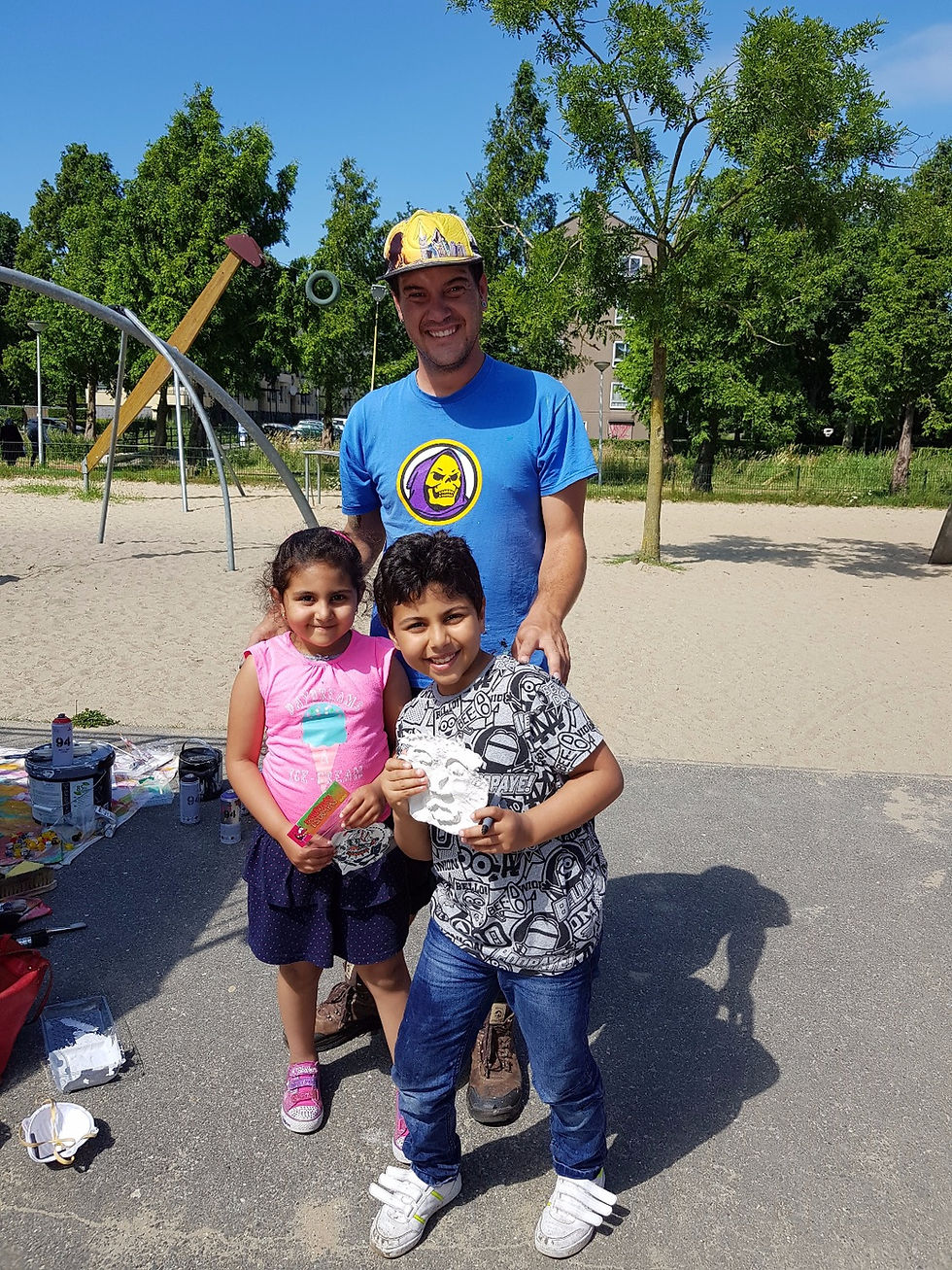
So for me, animals and mostly cartoon animals are very neutral, depicting without saying. I painted just like that, a wolf and a crocodile. A wolf is a very European animal and a crocodile is a very Latin American animal. I tried to make this mix of cultures with two representative animals from different places of the world. It was really really fun, the kids were amazing and liked it a lot. For me it was very sad that I cannot speak Dutch and interact with them. Cause when I do this kind of things in Mexico I speak a lot with the kids, I tell them if they like it, they need to take it seriously and study and paint and follow their heart, and all that cliché things. But it’s cool because when I was younger, when I was starting to see the people and how they paint, they told me those things.
It is very inspiring that somebody, when you were watching how they do it, told you that ‘it is just a matter of time. Take your time, be confident with yourself and you can do it and don’t worry, and don’t care too much but just do it. It is really fun and interesting to have feedback with the people that are passing by when painting.

Earlier when you were talking about your style, you were telling that there is very often a twist in your work. It is funny and cartoonish on one side, but it also has a social or darker twist to it. Is there such a specific twist in this artwork?
No there is not really a twist to a creepy or dark side that I sometimes like to use. Here it is more a mix between the cultures with the tropical Latin animals and northern European animals. So no, there is not really a darker twist, at least not consciously.
One more question. Do you have tips, for people that just started painting & want to become better at it?

I don’t know. I give a lot of workshops in Mexico, graffiti and graphic illustration workshops. All the people ask that kind of things. There is not really a tip. You have to be very honest with yourself. If you really like it, it is not going to hurt you to spend a lot of time in that. If you’re not hundred percent convinced that it is what you want to do, then maybe you are not spending that much time in the activity. It’s only an equation of time, how much time are you going to spend doing something? It can be dancing, playing football, stalling, painting, it can be anything. It is just a matter of time, I don’t believe there is this gift in the arts or the sports. If you like it, you can spend what, five hours, doing that same activity. So if you spend one year, five hours a day on that special activity, let’s say painting, after that year you will be better. But if in that year you spend only one hour a week doing that activity, well, for sure you are going to get somewhere but it is going to take you more time. So if you like it, just try to invest more time in that. Try to be honest with yourself. Just be yourself. If you want to do it, there is always a way to get materials, to get inspiration, to get spots to paint. Obviously it is a prove and mistake technique. It is impossible that you can control a lot of things at the first day, or the first week, or even the first year. But if you do it by yourself slowly, you’ll start realising how much you are improving. If you continue and are forced to doing that, you will be mastering that for sure. Like any physical activity, it needs time and concentration and analysing. Don’t stress yourself, try to enjoy it. To enjoy is the whole point, the moment that is not fun, is not good for you. Have fun, play.






